Getting real about student reflection
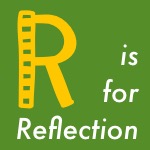 Ah, reflection. It may bring to mind an introspective moment, perhaps gazing into the still waters of a mountain lake and seeing a slightly puzzled person staring back. That’s not the kind of reflection we are talking about here.
Ah, reflection. It may bring to mind an introspective moment, perhaps gazing into the still waters of a mountain lake and seeing a slightly puzzled person staring back. That’s not the kind of reflection we are talking about here.
Reflection in a 21st Century learning sense is a key component of personalized learning.
Reflection allows students to construct knowledge, make personal connections, and ultimately become self-driven learners. More like a trailside break on a wilderness trek than a lazy lakeside afternoon.
Looking at the Why, What, How and When of student reflection*
Why is reflection so important?
Reflection is has a well documented association with student outcomes, with deeper reflections related to higher achievement. It also leads to positive habits of mind, as argued and beautifully displayed in this post by Jackie Gerstein that connects reflection with the cultivation of a Growth Mindset.
The most compelling argument in favor of reflection that I’ve come across, however, focuses on its foundation for the holy grail of classroom juju: student engagement.
The REAL Framework was developed as part of a massive action research project that leverages student reflection to increase engagement.
The REAL team refer to engagement in two senses, both of which are supported by reflection:
- Small ‘e’ engagement – Students are genuinely interacting with their learning intellectually, emotionally, and behaviorally.
- Big ‘E’ Engagement – Students are broadly connected to their education and feel that “school is for me”.
Here is a visual depiction developed by my colleague Susan Hennessey (who also turned me on to this powerful framework, thank you Susan!).
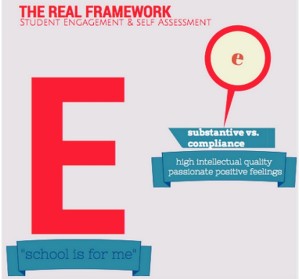
What should students reflect about?
Reflection is often linked to goals
The Reflection4Learning site provides a ton of great resources on goal setting and strategies for helping students reflect in the context of goals. Personal Learning Plans (PLPs) are largely a space for students to express their goals, establish action steps, and reflect on evidence of progress.
Reflection should happen on a day-to-day basis
Constructivist learning theory identifies reflection as essential for processing information and assimilating new ideas into existing schema. It allows students to regulate their own learning through self-assessment.
Luckily the REAL team kept it real (sorry) and developed a brilliant taxonomy** of everyday question prompts that combines depth of learning, modes of engagement (intellectual, emotional, behavioral), and focus of thinking (e.g., overcoming barriers, working with others). I extracted the prompts from the original research article for your convenience.
Keep it simple
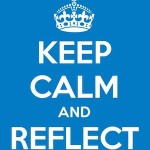 There is a continuum of complexity, from simply recounting what happened during class to inspired conceptual leaps, and different students will scale different heights at different times. Try to give students options on which prompt(s) to respond to. And how to respond, which brings us to…
There is a continuum of complexity, from simply recounting what happened during class to inspired conceptual leaps, and different students will scale different heights at different times. Try to give students options on which prompt(s) to respond to. And how to respond, which brings us to…
How should students reflect?
The reflexive answer is “however the heck they want to!” But let’s be a bit more reflective, shall we?
Research on neuroscience and Universal Design for Learning has taught us that we should allow students multiple means of expression. As noted in our post about using “Candy apps” for serious learning, seemingly silly tech tools can act as hooks to engage students in self-assessment and meta-cognition.
Consider allowing students to reflect using:
- Visuals – diagram using Google Draw; make an infographic via Dipity or interactives using ThingLink; develop slideshows in Google Slides, Haiku Deck, or Nearpod
- Audio – easily record your voice using Vocaroo or recordmp3online
- Video – screencast using MoveNote, create slideshows and movies using WeVideo
Where should students reflect?
Students need a repository for all of this self-expression and reflection they are doing. Many educators across Vermont are using Blogger for this purpose. It is relatively simple to use and is part of the Google suite of tools so it tends to play well with other apps.
As a repository for reflection, students’ blogs are more like private learning journals than typical blogs – they are shared just with teachers and possibly one or more class mates. A huge benefit is that it allows organic organization through the use of labels. Students can put tons of posts and content in there, label as they go along, and then fetch their work later to review or cultivate as part of a PLP / e-portfolio. Labels can be added and edited, posts can be revised or ignored, so it creates a low-stakes space for students to capture and connect with their learning.
When should students reflect?
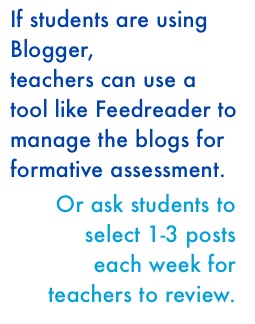 All the time! Many teachers already set aside time in every class for students to process their learning, fill out exit tickets, etc. As it becomes part of the routine and fabric of the class, it doesn’t have to be a big deal or take a lot of time. If students are using Blogger, teachers can use a tool like Feedreader to manage student blogs and use them as formative assessment. Or ask students to select 1-3 posts each week for teachers to review.
All the time! Many teachers already set aside time in every class for students to process their learning, fill out exit tickets, etc. As it becomes part of the routine and fabric of the class, it doesn’t have to be a big deal or take a lot of time. If students are using Blogger, teachers can use a tool like Feedreader to manage student blogs and use them as formative assessment. Or ask students to select 1-3 posts each week for teachers to review.
Periodically, students can do more formal reflections on their progress toward goals and their overall learning.
Students can mine the old posts in their blog to identify artifacts that represent growth or to find key learnings that can be revised or re-reflected upon. If they’ve been reflecting on their learning on a regular basis, these more formal goals-oriented reflections will be more accessible and meaningful.
*It should be noted that everything said here about the benefits of reflection for students applies to educators as well.
**If you prefer the classic taxonomy of Bloom (well, the revised version of the classic), see how Peter Pappas applies it to reflection.
How are you getting real about student reflection?
Need to catch up on your edtech ABCs? Check out the full series here.
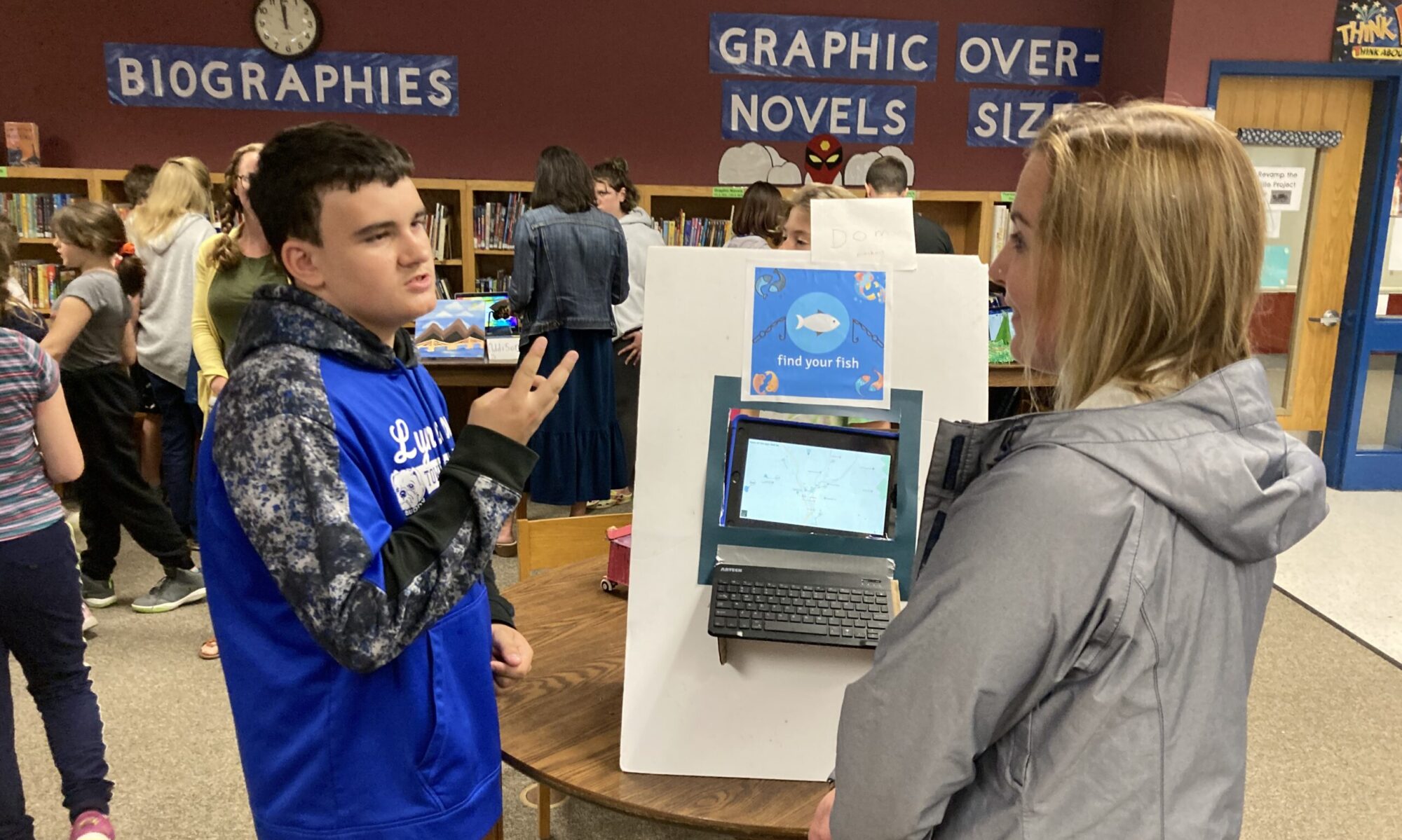

Getting real about student reflection: why, what how & when http://t.co/qLqFdPW2IY http://t.co/Y7mw1EIYB8
R is for REAL Reflection http://t.co/u0KU4UCQdO
ABCs of EdTech: R is for REAL Reflection http://t.co/Tm4D1Ht4Uj